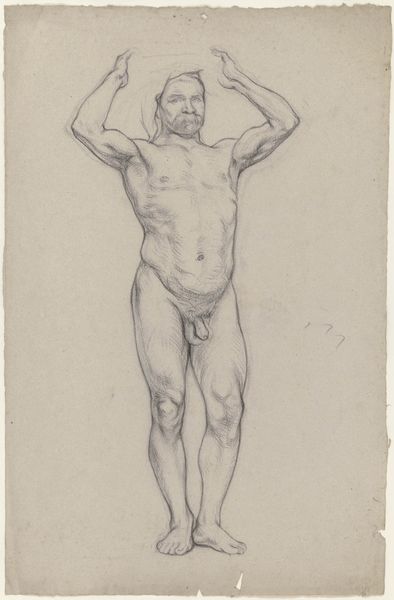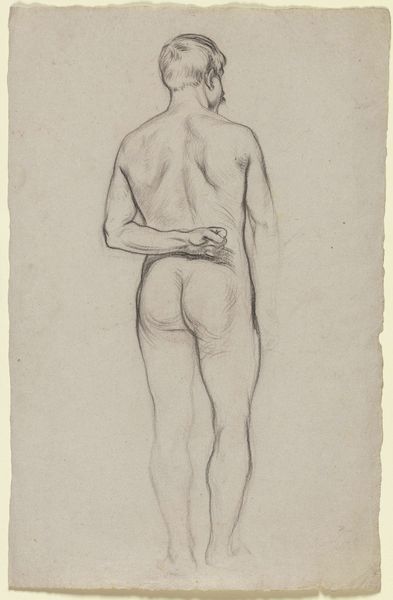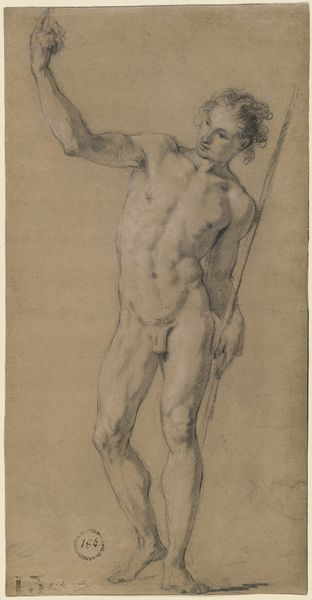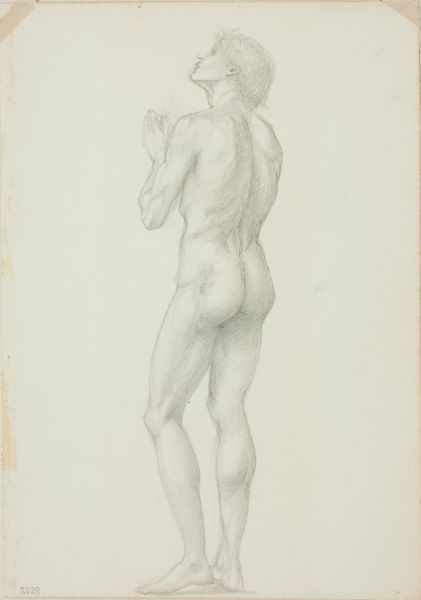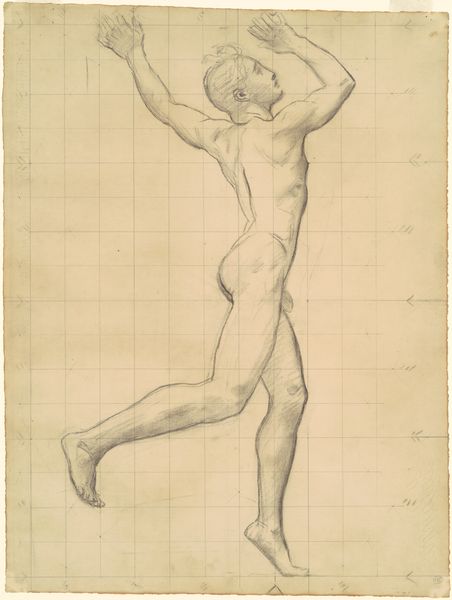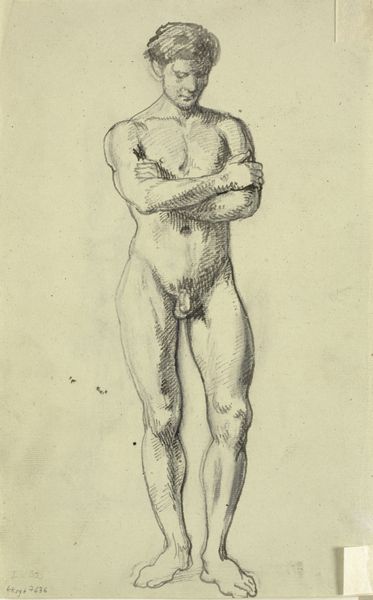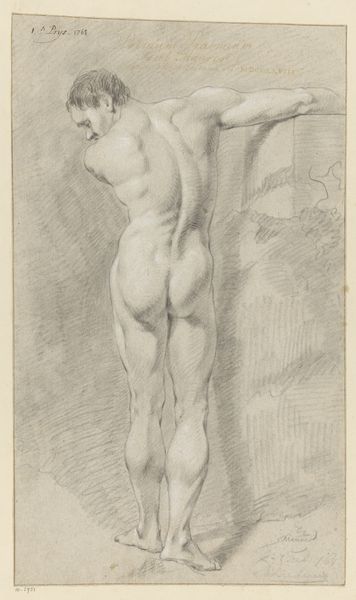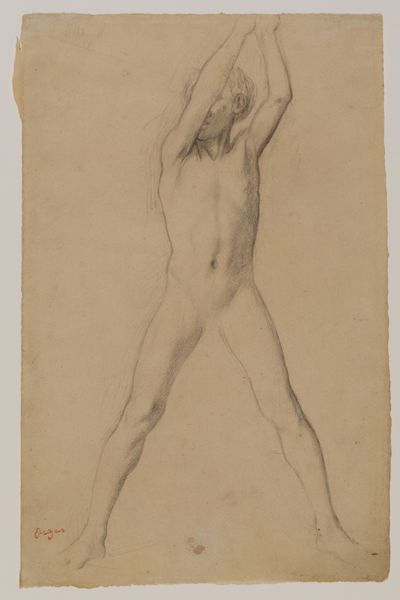
drawing, dry-media
#
portrait
#
drawing
#
figuration
#
form
#
dry-media
#
line
#
academic-art
#
nude
#
realism
Copyright: Public Domain
Curator: This drawing, titled "Standing male nude", was created around 1855 by Otto Scholderer, and is held at the Städel Museum. It’s rendered in dry media, a red chalk or sanguine perhaps, characteristic of academic figure studies. Editor: Ah, it's interesting... I'm immediately drawn to the way the artist captures the subtle tensions in the back. You know, the way the muscles pull and flex. It's so anatomical but almost feels a bit…vulnerable? Curator: Exactly. These academic studies were crucial for understanding and representing the human form. They’re also artifacts of a specific power dynamic, where the male gaze, the structures of art education, and even systems of social order shaped the way the body was depicted. The subject almost becomes an object for scrutiny. Editor: Hmmm, yes! He is stood on a square plinth with his back to us holding what seems like a pole behind him, an object for scrutiny you say? Almost a tool? There is some roughness in line work. Like he can't wait to stop holding this pose and get going? Curator: I see what you mean. While executed with precision, there’s something very honest in the way Scholderer approached it. These preparatory studies weren't always meant for public display, revealing a less polished side of the artist’s process, that doesn't shy away from imperfections or the subject's humanity, beyond idealized form. The way light gently caresses the form emphasizes volume and gives it that realistic, palpable presence, without eroticizing. Editor: And I love how you see the political dimensions intertwining with the artistry, because now that you mention that, all the weight seems like it’s really resting on that left leg. Kind of changes my initial perception...it doesn't feel all that poised, does it? More about this individual’s struggle to achieve some sort of perfect balance. Curator: Ultimately, a work like this invites us to reconsider not just what we see, but how we’ve learned to see. To look at these traditional studies with contemporary perspectives to ask, whom do they serve? What assumptions do they perpetuate? And what new possibilities do they suggest? Editor: A good reminder, actually! Now I see the sketch as almost a dance between observation and the male gaze—caught between anatomical curiosity and human reality. Thanks!
Comments
No comments
Be the first to comment and join the conversation on the ultimate creative platform.

